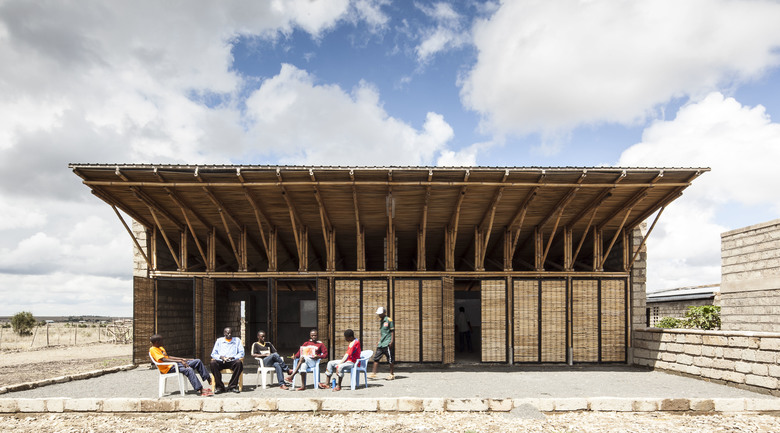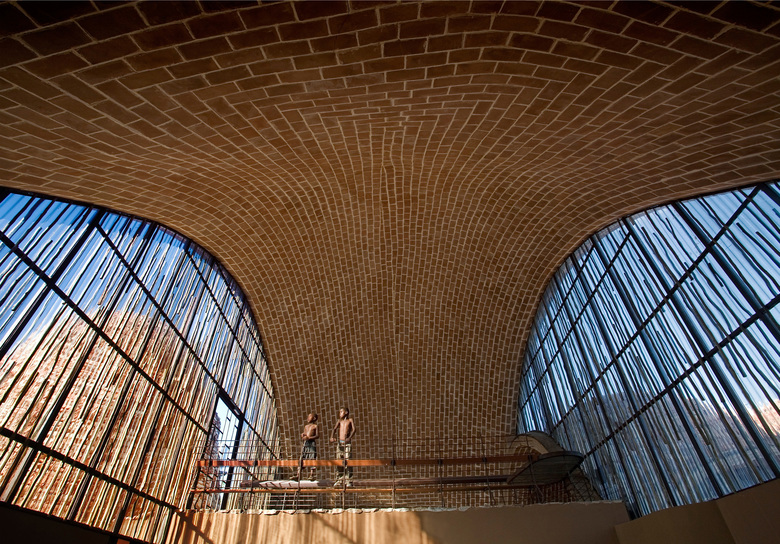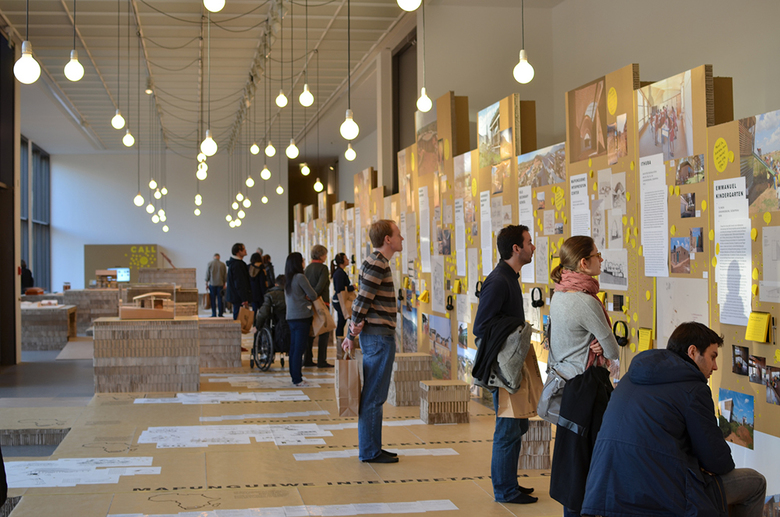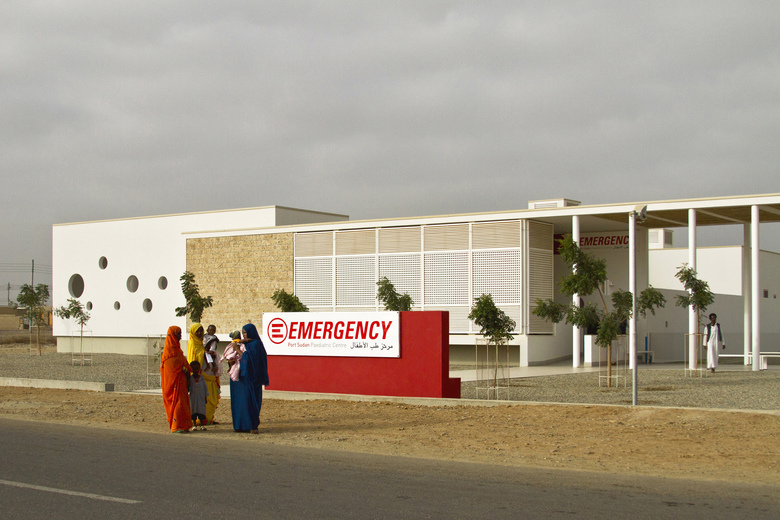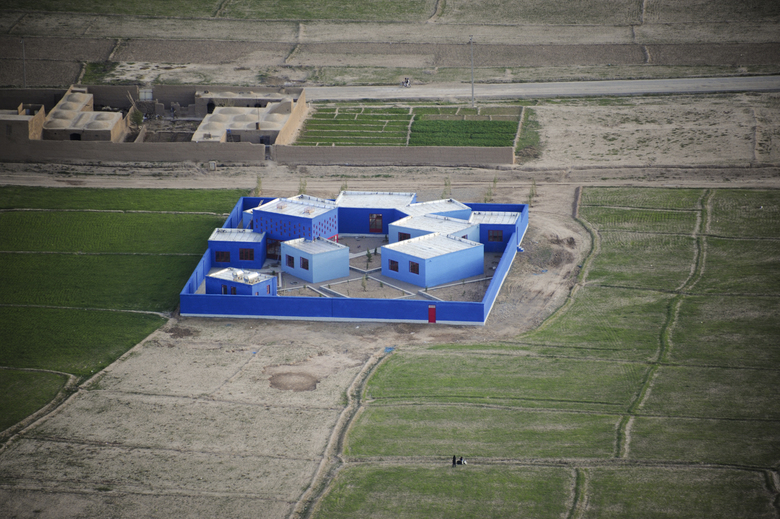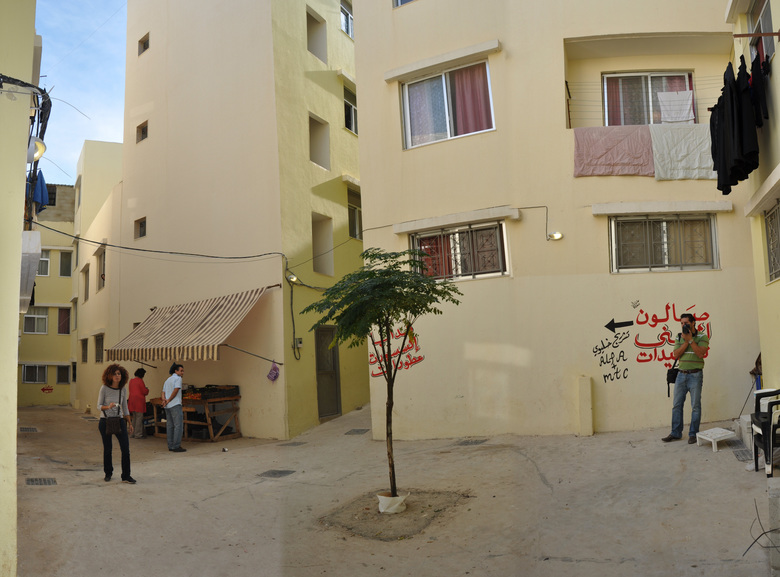Looking Outside the Box
Spurred by "a steady stream of exhibitions and events that address the social and societal issues connected with architecture," Swiss-Architects eMagazin editor Inge Beckel looks at what happens when European architects work in Africa and other non-"First-World" contexts.
Building outside the 'first world' as a source of inspirationWhen the panel discussion to which we had been invited was over, the chairman – also an architectural critic by profession – confided to a small, intimate group that the era of the star architect was probably over. In the past, when he heard of the completion of a new building by one of the stars, he would board a plane and go to look at the architect's "youngest offspring," but nowadays he felt a creeping sense of déjà vu at times rather than glowing interest, given that he could see pictures of the work in question anyway. Quite a statement – and certainly a personal one.
At the same time, there is currently a steady stream of exhibitions and events that address the social and societal issues connected with architecture rather than the formal ones. In the past winter, for instance, the Architecture Gallery on the Weissenhof estate in Stuttgart held an exhibition about social projects. There was also an exhibition in the Architecture Museum of the Technical University of Munich: Afritecture. Building with the Community. Among those currently on display are Empowerment Shack in Zurich, a collaborative project initiated by Brillembourg & Klumpner, and Think Global, Build Social! at the Architekturzentrum Wien. With reference to the Afritecture exhibition I would like, for my part, to touch on a few points that illustrate the current relevance of bottom-up approaches and thus contradict the top-down principle of "star architecture."
If you visit an exhibition in Munich's Pinakothek der Moderne, you first enter the foyer of this spacious building, which creates an impression primarily by its breadth and height, and to some extent by the emptiness of the space. Last winter, however, any visitors who wanted to go into the Afritecture exhibition in the Architecture Museum were politely requested to take off their shoes at the entrance. Now barefooted, so to speak, their perception was channeled not only through the eyes, but simultaneously through the sense of touch as they felt the warm, yielding, cardboard surface underfoot.
Images and texts on the walls and on the floor guided the visitors, while free-standing models in the hall complemented the presentations. There was a total of 26 projects from ten African countries, which were arranged less according to name credits than statements from related contexts or statements by users; these were accompanied by photos and by audio narratives on headphones. The buildings themselves were not left isolated in front of the presentations; instead they were enmeshed in webs of diverse information together with the media tools, which lent the architecture, shown as it is experienced in everyday life, a certain degree of commitment.
Apart from the criteria that neither the architect's name nor the object itself lay at the focus of attention, it was the buildings' locations – outside Europe and North America, as the title Afritecture suggests – that formed the common thread in what was shown. This was not the so-called First World being presented once again as a model for emerging markets and the "other" worlds. Instead, an example was being set by projects from precisely these "non-first world" countries. And while China aims to beat the Old (and for a long time "First") World at its own game, so to speak, Africa – as addressed in the exhibition – stands for possible alternatives.
A key factor in the perception of this architecture, which does not primarily follow in the footsteps of the modernism forged in Europe and with it the International Style of the post-war years, under North American influence in turn, is the Aga Khan Award. This has been presented every three years since 1980, with the twelfth occasion in 2013. The members of the jury for the Aga Khan Award mostly grant recognition to buildings that are familiar to us (some of which could easily belong in our own countries). In terms of form, these works incorporate both regional building traditions – the Mapungubwe Centre by Peter Rich, or Maria Grazia Cutuli primary school by architects from Italy – and, to some extent, abstract international architecture, such as the Pediatric Center by Tamassociati, or the rebuilding of a refugee camp by UNRWA and NBRC (read more here).
Many of these projects involve people from Europe or North America, be they "white" or be they Africans who study, work, and live here. This transfer, of whatever kind, is necessary and right. However, it concerns buildings that are meant to take root locally in each case and embed themselves in a particular local context or communicate with it. It concerns buildings to serve the people of a place and provide them with good and habitable spaces that serve a functional purpose. Last but not least, it concerns the women and men of Africa themselves, who want to (co-)shape their future actively, including their buildings.
Building outside Europe is often simpler, more direct, more engaged – and thus also more cost-effective. Perhaps a certain yearning, which is manifest in the various exhibitions and articles produced in the "first" world, is inherent in precisely the closeness and commitment of architecture that has to focus on essentials, in comprehensibility that is closely attuned to the community of people, to their experiences, encounters and relationships in daily life.
Looking back, I sometimes feel reminded of the years when Aldo and Hannie van Eyck visited the settlements of the Dogon with Paul Parin, or when the French anthropologist Claude Lévi-Strauss published Tristes Tropiques in 1955, or (also in 1955) when Le Corbusier completed the chapel of Notre Dame du Haut in Ronchamp. This approach – of drawing inspiration from Africa and other non-European countries – is certainly one that shows a way forward. More so, at any rate, than one of exporting the accomplishments of the "first world" there without calling them into question and without knowledge of local needs, as has been done for many years.
Benefits generally accumulate from the mutual exchange of things and knowledge that the other party (whichever that may be) is either not aware of or does not possess – or has lost over the years and needs to acquire again. These are things or processes that grow out of the common knowledge and the everyday experience of ordinary people, not individual decrees issued from above. In other words: bottom-up approaches, not top-down ones. As an author named Lim Jee Yuan wrote, a good quarter of a century ago: "The widening social inequalities within and between nations show the failure of conventional development approaches which are imposed from the top down, using capital-intensive technologies benefitting only a minority and neglecting the majority."
- Lim Jee Yuan, The Malay House: Rediscovering Malaysia's Indigenous Shelter System, Pulau Pinang 1987, p. 10
- Aga Khan Award for Architecture
- Andres Lepik (Ed.), Afritecture: Bauen mit der Gemeinschaft, Ostfildern 2013.
- Andres Lepik (Ed.), "Moderators of Change. Architektur, die hilft", in Zusammenarbeit mit Anne Schmedding, Jahresring 58, Jahrbuch für moderne Kunst, Ostfildern 2011.
- Danielle Fischer, "Mission oder Austausch? Bauen in Äthiopien", in: TEC21, 21/2013, S. 16–18.
- "Rethinking architecture in Africa", in: uncube, no. 17, 19th December 2013.
